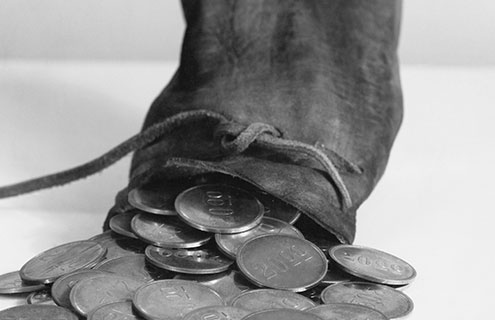Renminbi is number one in APAC
28 May 2015 Hong Kong
 Image: Shutterstock
Image: Shutterstock
Renminbi is now the most active currency in the Asia-Pacific (APAC) region in terms of trades with China and Hong Kong, according to SWIFT’s RMB tracker.
Value in weight of the RMB used for payments exchange between APAC and China and Hong Kong increased by 327 percent between April 2012 and April 2015. In this time, payment of this type made in RMB increased from 7 percent of all transaction to 31 percent.
It is now the most popular currency used to do business between APAC and China, compared to the fifth most popular in 2012.
This growth has been attributed to an increase of RMB use in Asian countries when directly trading with Hong Kong and China.
In the last three years a majority of Asian countries have moved from being low users – conducting less than 10 percent of trades in RMB – to medium users – conducting between 10 and 50 percent of trades in RMB. Six countries are considered high users of RMB.
Michael Moon, SWIFT’s head of payments in APAC, said: “Asia Pacific is clearly paving the way forward when it comes to RMB adoption.”
He added: “Big trading partners like Singapore, Taiwan and South Korea have adopted the RMB for the majority of their payments with Greater China. The new appointments of four clearing centres (South Korea, Malaysia, Thailand and Australia) within the region should also have a positive impact on RMB adoption, solidifying the important role of the currency within Asia Pacific and abroad.”
RMB has also retained its place as the fifth most active currency for global payments, accounting for just over 2 percent of payments worldwide.
Value in weight of the RMB used for payments exchange between APAC and China and Hong Kong increased by 327 percent between April 2012 and April 2015. In this time, payment of this type made in RMB increased from 7 percent of all transaction to 31 percent.
It is now the most popular currency used to do business between APAC and China, compared to the fifth most popular in 2012.
This growth has been attributed to an increase of RMB use in Asian countries when directly trading with Hong Kong and China.
In the last three years a majority of Asian countries have moved from being low users – conducting less than 10 percent of trades in RMB – to medium users – conducting between 10 and 50 percent of trades in RMB. Six countries are considered high users of RMB.
Michael Moon, SWIFT’s head of payments in APAC, said: “Asia Pacific is clearly paving the way forward when it comes to RMB adoption.”
He added: “Big trading partners like Singapore, Taiwan and South Korea have adopted the RMB for the majority of their payments with Greater China. The new appointments of four clearing centres (South Korea, Malaysia, Thailand and Australia) within the region should also have a positive impact on RMB adoption, solidifying the important role of the currency within Asia Pacific and abroad.”
RMB has also retained its place as the fifth most active currency for global payments, accounting for just over 2 percent of payments worldwide.
NO FEE, NO RISK
100% ON RETURNS If you invest in only one asset servicing news source this year, make sure it is your free subscription to Asset Servicing Times
100% ON RETURNS If you invest in only one asset servicing news source this year, make sure it is your free subscription to Asset Servicing Times



